Content Delivery Method
CHEUNG; WAI-TUNG ; et al.
U.S. patent application number 15/535233 was filed with the patent office on 2017-12-28 for content delivery method. The applicant listed for this patent is ABLE WORLD INTERNATIONAL LIMITED. Invention is credited to HO-CHEUNG CHEUNG, WAI-TUNG CHEUNG, CHUN-HSIAO LIN.
| Application Number | 20170371625 15/535233 |
| Document ID | / |
| Family ID | 55017056 |
| Filed Date | 2017-12-28 |
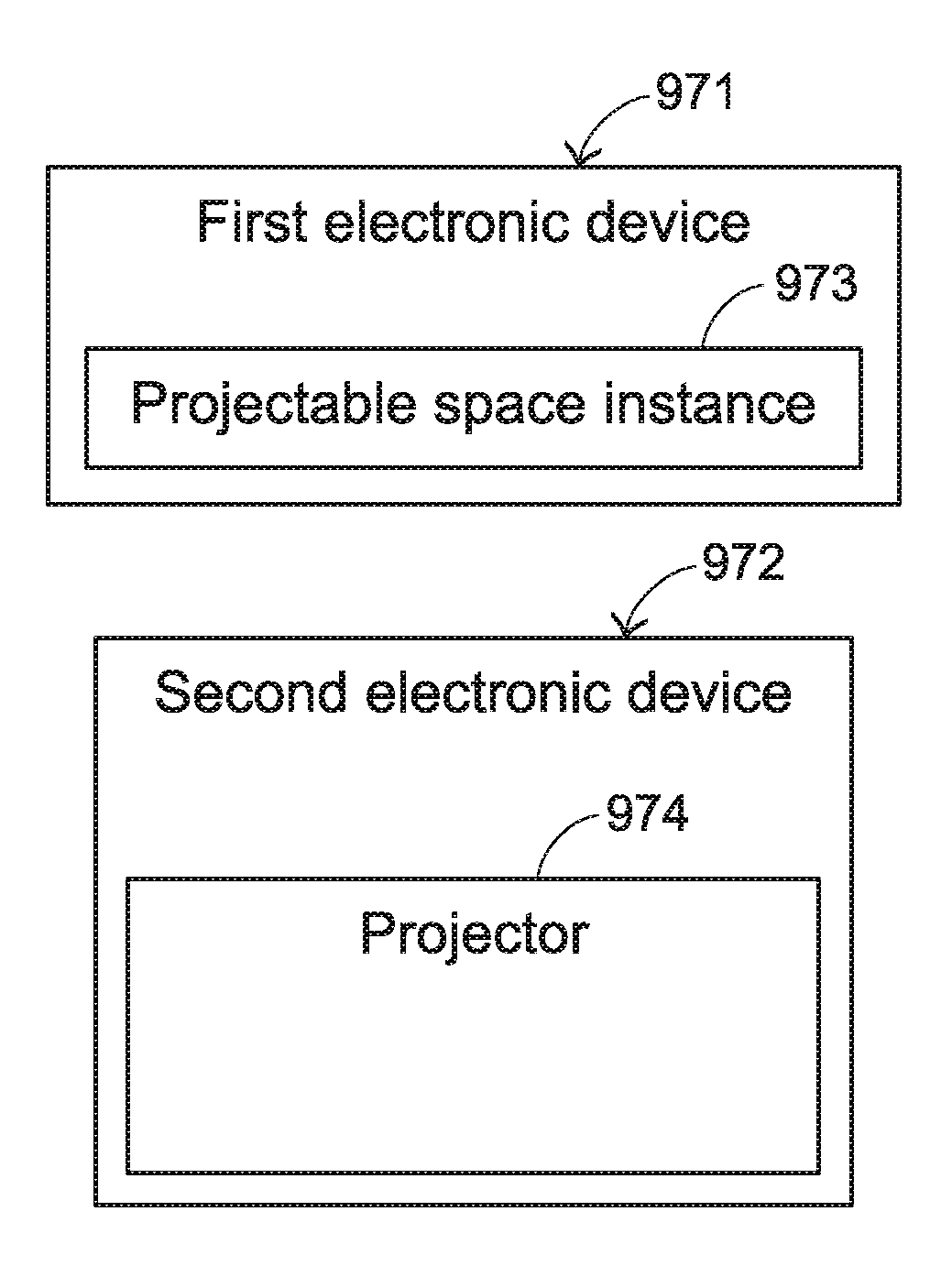
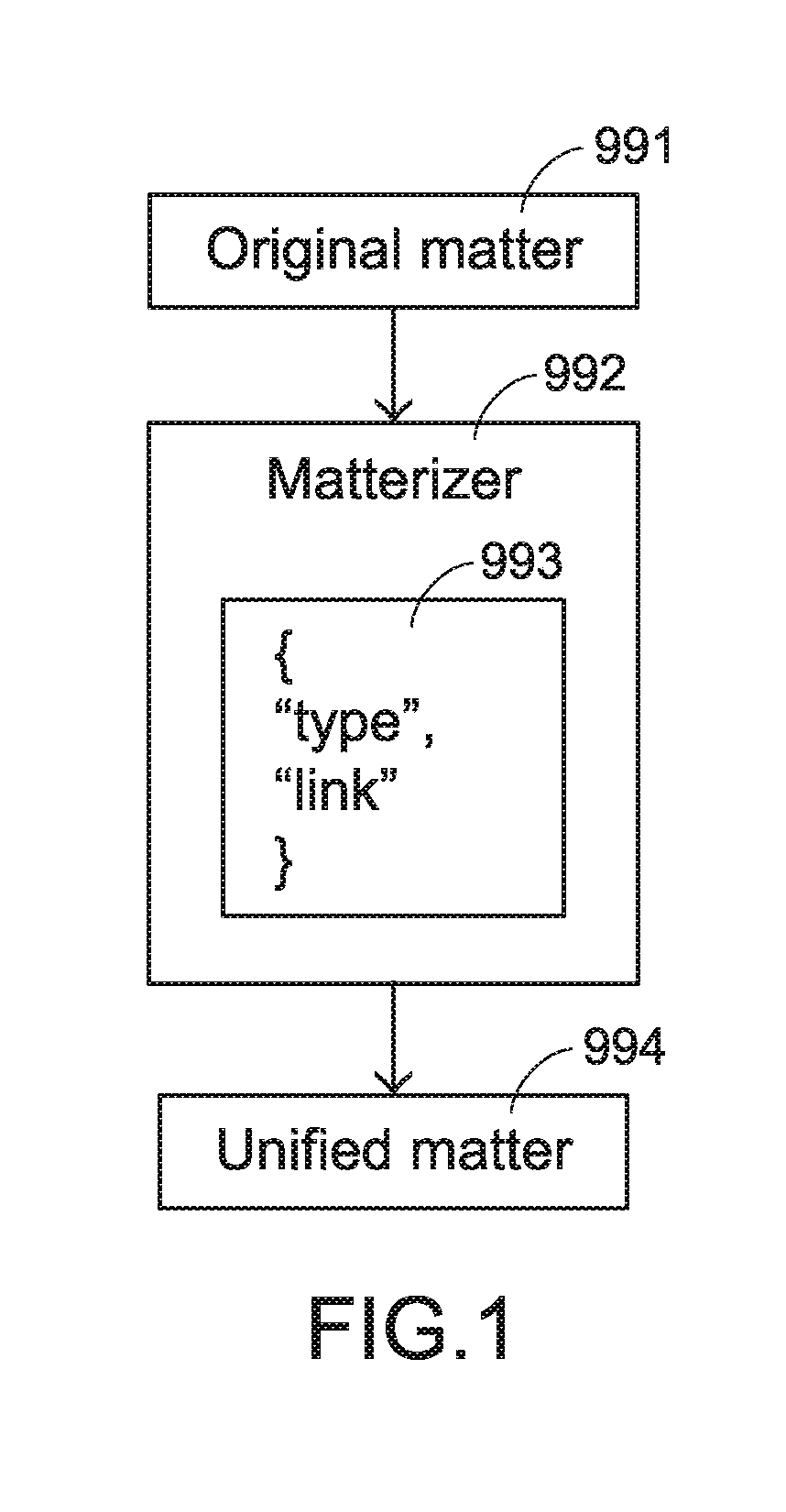
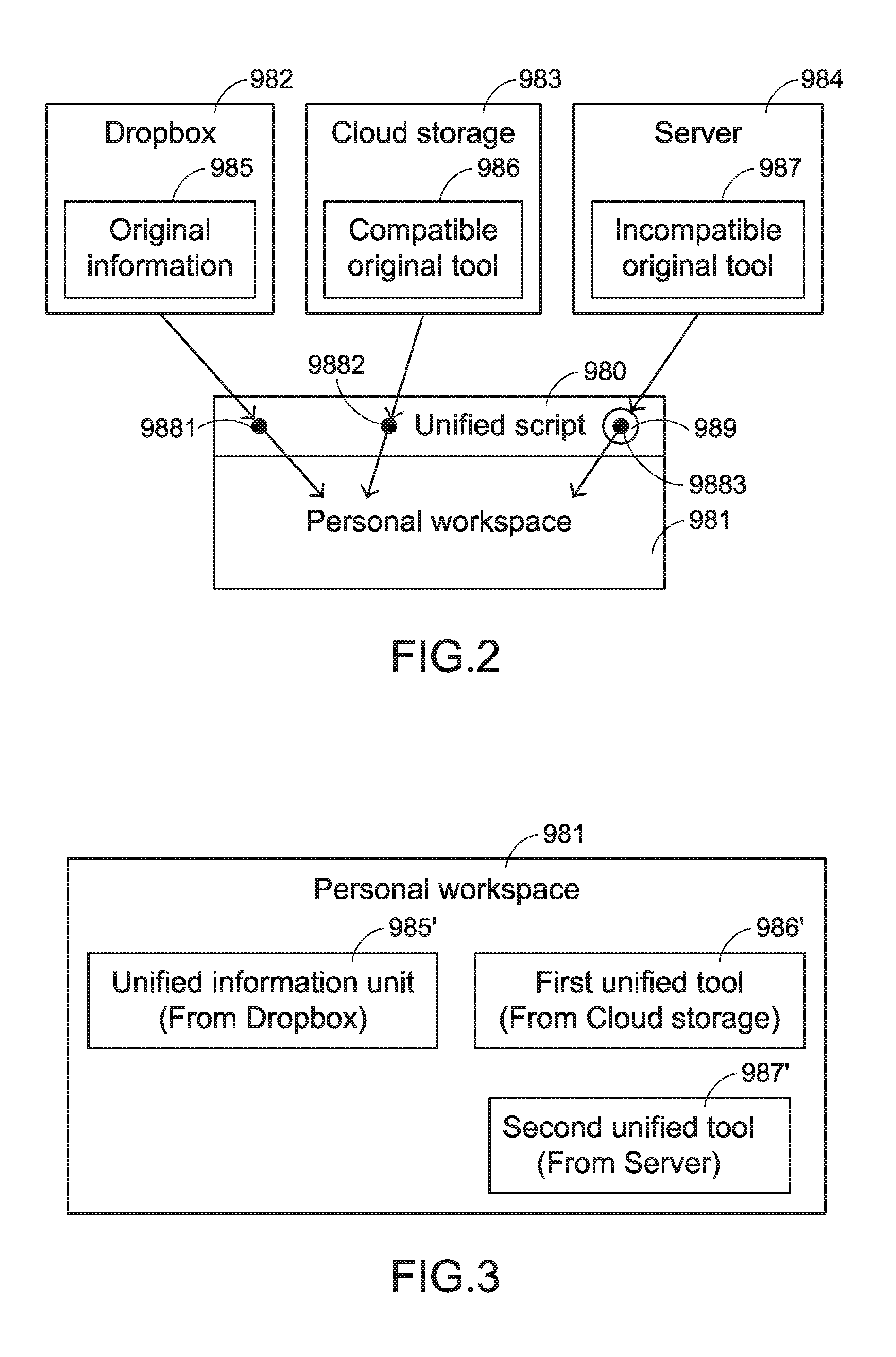

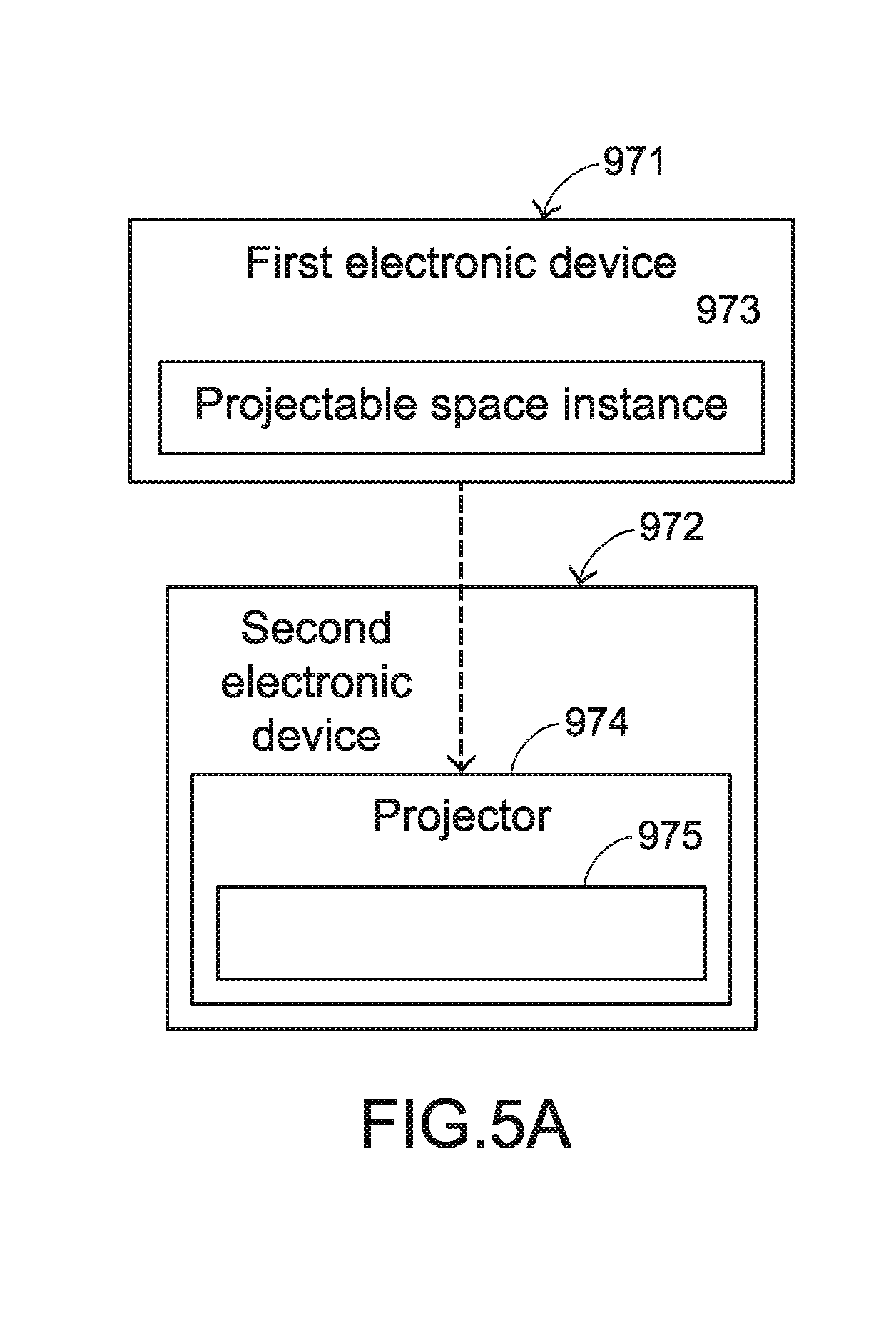
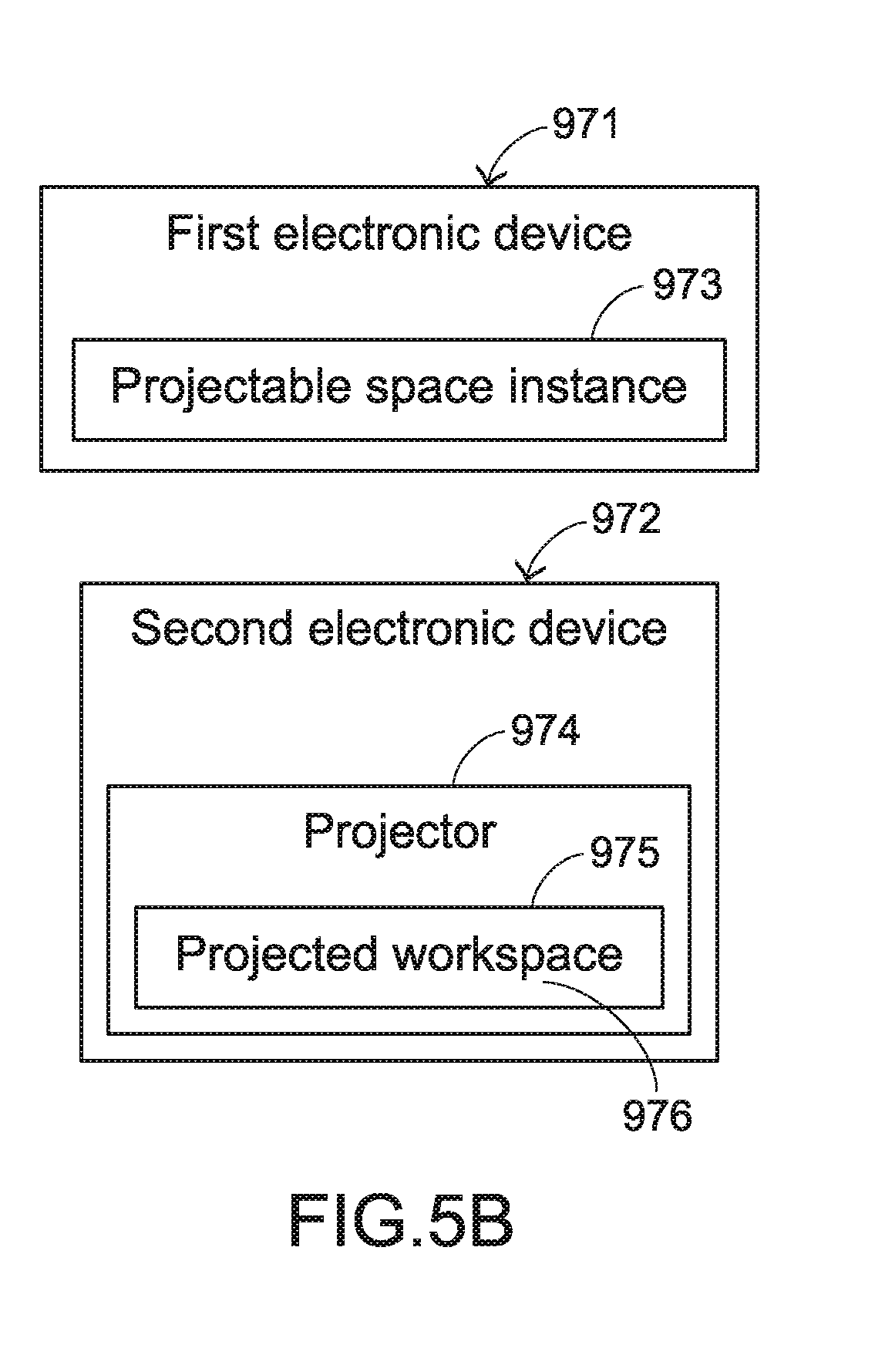
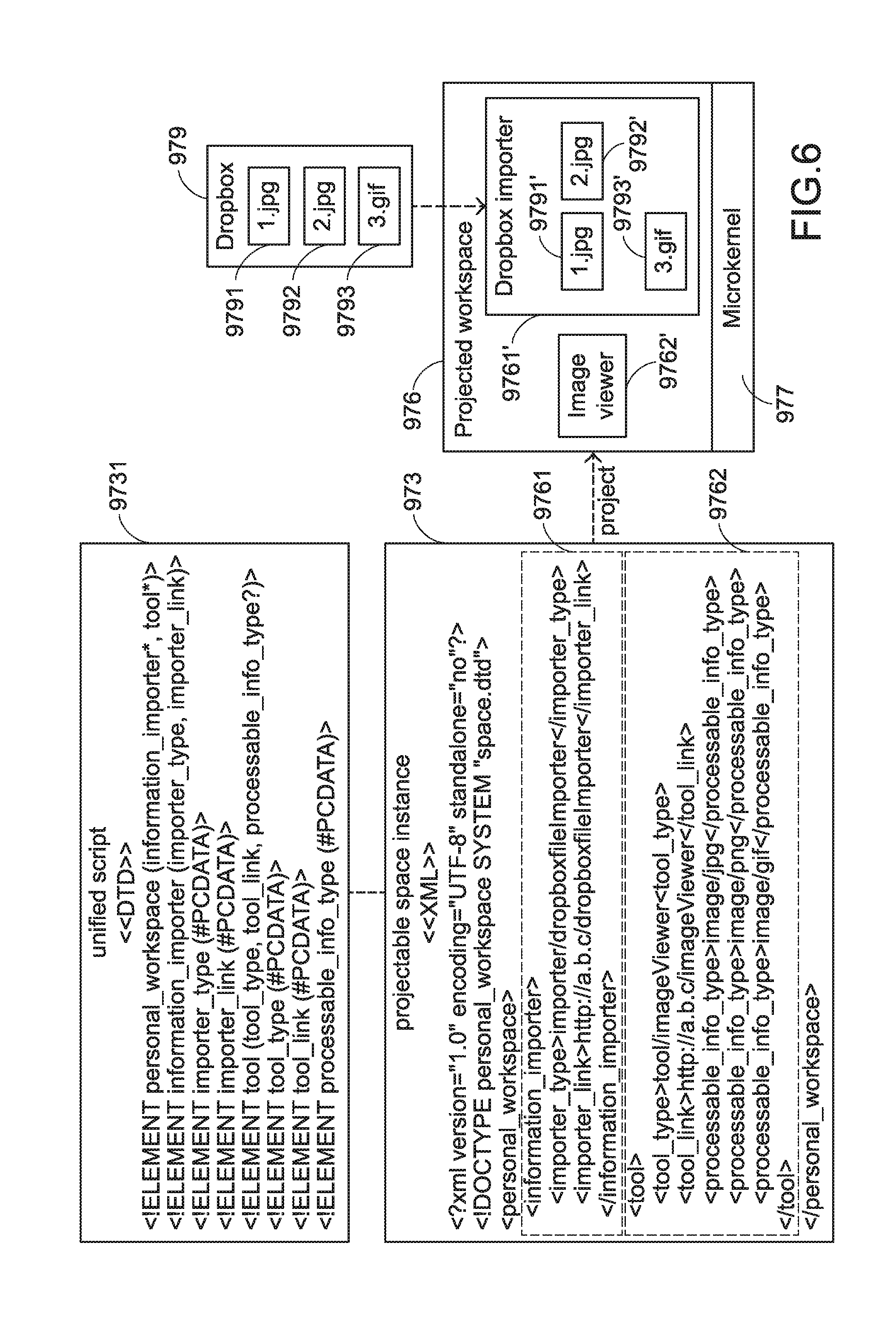


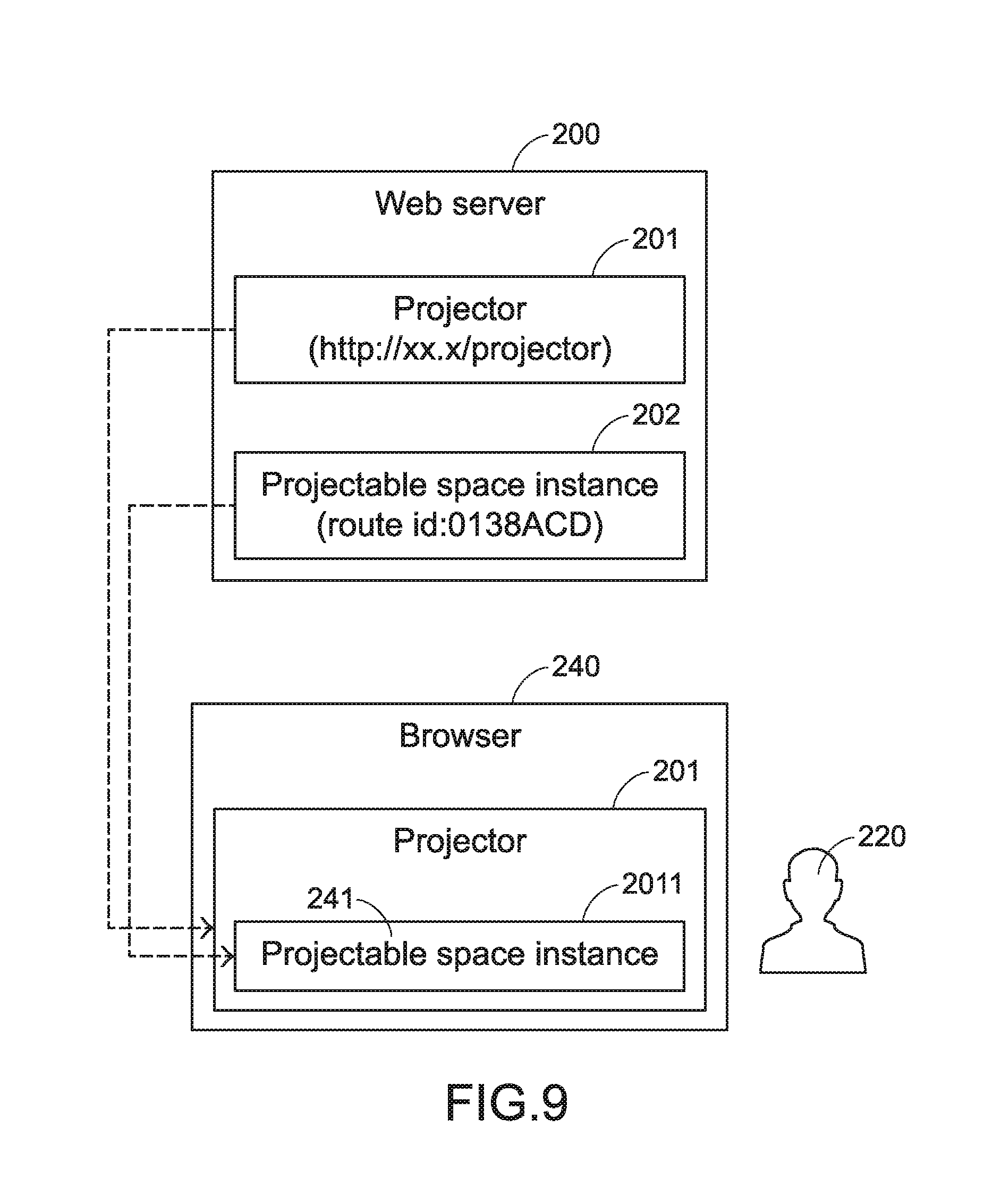
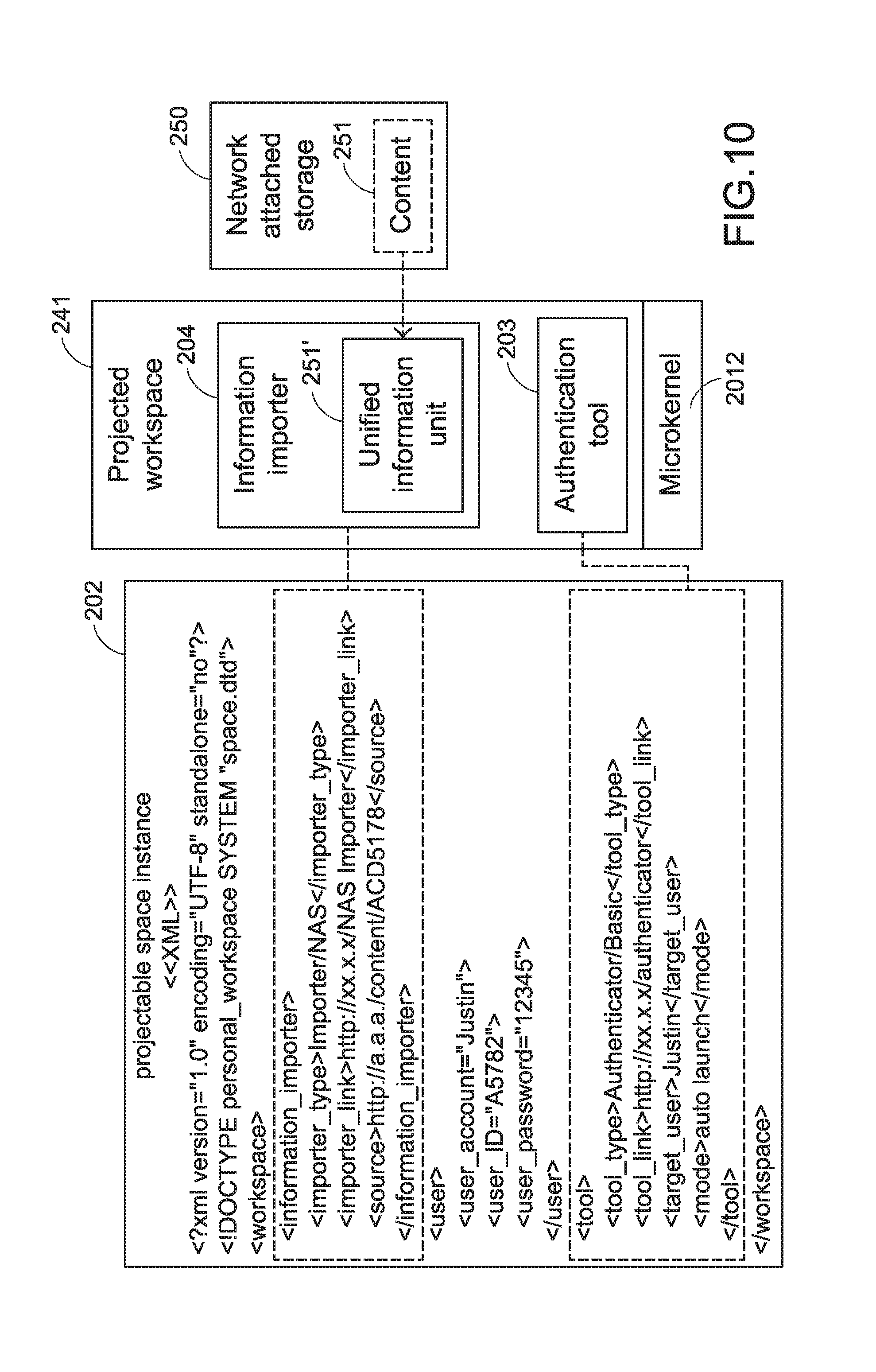
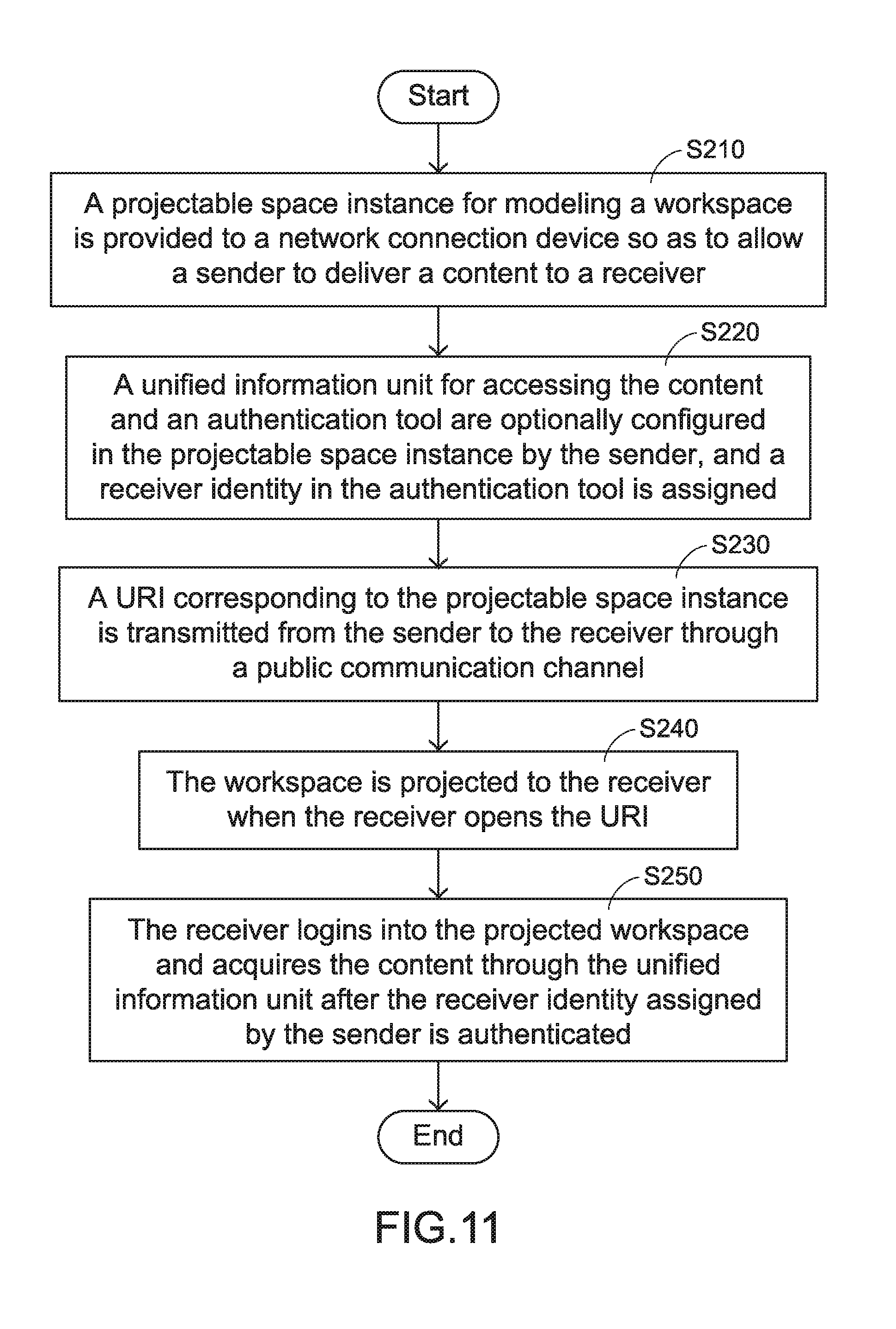
View All Diagrams
| United States Patent Application | 20170371625 |
| Kind Code | A1 |
| CHEUNG; WAI-TUNG ; et al. | December 28, 2017 |
CONTENT DELIVERY METHOD
Abstract
A content delivery method includes the following steps. Firstly, a projectable space instance for modeling a workspace is provided to a network connection device so as to allow a sender to deliver a content to a receiver. Then, an information importer for providing the content to the workspace and an authentication tool are optionally configured in the projectable space instance by the sender, and a receiver identity is assigned in the authentication tool. Then, a uniform resource identifier (URI) corresponding to the projectable space instance is transmitted from the sender to the receiver through a public communication channel. When the receiver opens the URI, the workspace is projected to the receiver. After the receiver is authenticated according to the receiver identity assigned by the sender, the receiver logins into the projected workspace and acquires the content.
| Inventors: | CHEUNG; WAI-TUNG; (Hong Kong, HK) ; LIN; CHUN-HSIAO; (New Taipei City, TW) ; CHEUNG; HO-CHEUNG; (Hong Kong, HK) | ||||||||||
| Applicant: |
|
||||||||||
|---|---|---|---|---|---|---|---|---|---|---|---|
| Family ID: | 55017056 | ||||||||||
| Appl. No.: | 15/535233 | ||||||||||
| Filed: | December 11, 2015 | ||||||||||
| PCT Filed: | December 11, 2015 | ||||||||||
| PCT NO: | PCT/CN2015/097136 | ||||||||||
| 371 Date: | June 12, 2017 |
Related U.S. Patent Documents
| Application Number | Filing Date | Patent Number | ||
|---|---|---|---|---|
| 14577772 | Dec 19, 2014 | 9626157 | ||
| 15535233 | ||||
| Current U.S. Class: | 1/1 |
| Current CPC Class: | G06F 40/106 20200101; G06F 8/38 20130101; H04L 63/102 20130101; H04L 67/12 20130101; G06F 8/35 20130101; G06F 8/34 20130101; G06F 9/451 20180201; G06F 21/31 20130101; G06F 8/20 20130101 |
| International Class: | G06F 9/44 20060101 G06F009/44 |
Foreign Application Data
| Date | Code | Application Number |
|---|---|---|
| Dec 12, 2014 | CN | 201410768564.X |
| Dec 18, 2014 | CN | 201410796528.4 |
| Dec 23, 2014 | CN | 201410814138.5 |
Claims
1. A content delivery method, comprising: providing a projectable space instance to a network connection device so as to allow a sender to deliver a content to a receiver, wherein the projectable space instance is used for modeling a workspace; allowing the sender to optionally configure an information importer for providing the content to the workspace and an authentication tool in the projectable space instance and assign a receiver identity in the authentication tool; transmitting a uniform resource identifier corresponding to the projectable space instance from the sender to the receiver through a public communication channel; projecting the workspace to the receiver when the receiver opens the uniform resource identifier; and allowing the receiver to login into the projected workspace and acquire the content after the receiver identity assigned by the sender is authenticated.
2. The content delivery method according to claim 1, wherein the network connection device is a public machine or a non-public machine for allowing the sender to optionally install the projectable space instance.
3. The content delivery method according to claim 1, wherein the content is a message, a document, a program, a number, a digital information, a medium, an electronic book or any combination thereof.
4. The content delivery method according to claim 1, wherein a unified information unit and/or a unified tool accessible in the projected workspace is imported into the projected workspace through the information importer.
5. The content delivery method according to claim 4, wherein the unified information unit includes a link, and the link indicates where an original information of the content is located.
6. The content delivery method according to claim 1, wherein the public communication channel is Line, Whatsapp, Skype, Facebook messenger or any channel capable of transmitting the uniform resource identifier.
7. The content delivery method according to claim 1, wherein the receiver identity includes a Facebook ID, a Line ID, an electronic mail account, a fingerprint or any other identification item to be identified by the authentication tool.
8. The content delivery method according to claim 1, wherein the projectable space instance is instantiated by a unified script, which is used as an intermediate language for implementing the workspace.
9. The content delivery method according to claim 1, wherein the step of projecting the workspace further comprises a step of using a projector to parse the projectable space instance to build a working environment, so that the projected workspace is executed in the working environment.
10. A content delivery method, comprising: providing a projectable space instance to a network connection device so as to allow a sender to deliver a content to a receiver, wherein the projectable space instance is used for modeling a workspace; allowing the sender to optionally configure an unified information unit for accessing the content and an authentication tool in the projectable space instance and assign a receiver identity in the authentication tool; transmitting a uniform resource identifier corresponding to the projectable space instance from the sender to the receiver through a public communication channel; projecting the workspace to the receiver when the receiver opens the uniform resource identifier; and allowing the receiver to login into the projected workspace and acquire the content through the unified information unit after the receiver identity assigned by the sender is authenticated.
11. The content delivery method according to claim 10, wherein the network connection device is a public machine or a non-public machine for allowing the sender to optionally install the projectable space instance.
12. The content delivery method according to claim 10, wherein the content is a message, a document, a program, a number, a digital information, a medium, an electronic book or any combination thereof.
13. The content delivery method according to claim 10, wherein the projectable space instance has a built-in information importer, wherein the unified information unit is optionally provided to the projected workspace through the built-in information importer.
14. The content delivery method according to claim 10, wherein the unified information unit includes a link, and the link indicates where an original information of the content is located.
15. The content delivery method according to claim 10, wherein the public communication channel is Line, Whatsapp, Skype, Facebook messenger or any channel capable of transmitting the uniform resource identifier.
16. The content delivery method according to claim 10, wherein the receiver identity includes a Facebook ID, a Line ID, an electronic mail account, a fingerprint or any other identification item to be identified by the authentication tool.
17. The content delivery method according to claim 10, wherein the projectable space instance is instantiated by a unified script, which is used as an intermediate language for implementing the workspace.
18. The content delivery method according to claim 10, wherein the step of projecting the workspace further comprises a step of using a projector to parse the projectable space instance to build a working environment, so that the projected workspace is executed in the working environment.
19. A computer program product for delivering a content, the computer program product comprising a program code, wherein while the computer program product is executed in a computer, the program code performs steps of: providing a projectable space instance to a network connection device so as to allow a sender to deliver a content to a receiver, wherein the projectable space instance is used for modeling a workspace; allowing the sender to optionally configure an information importer for providing the content to the workspace and an authentication tool in the projectable space instance and assign a receiver identity in the authentication tool; transmitting a uniform resource identifier corresponding to the projectable space instance from the sender to the receiver through a public communication channel; projecting the workspace to the receiver when the receiver opens the uniform resource identifier; and allowing the receiver to login into the projected workspace and acquire the content after the receiver identity assigned by the sender is authenticated.
20. A computer program product for delivering a content, the computer program product comprising a program code, wherein while the computer program product is executed in a computer, the program code performs steps of: providing a projectable space instance to a network connection device so as to allow a sender to deliver a content to a receiver, wherein the projectable space instance is used for modeling a workspace; allowing the sender to optionally configure an unified information unit for accessing the content and an authentication tool in the projectable space instance and assign a receiver identity in the authentication tool; transmitting a uniform resource identifier corresponding to the projectable space instance from the sender to the receiver through a public communication channel; projecting the workspace to the receiver when the receiver opens the uniform resource identifier; and allowing the receiver to login into the projected workspace and acquire the content through the unified information unit after the receiver identity assigned by the sender is authenticated.
Description
TECHNICAL FIELD
[0001] The present invention relates to a content delivery method.
BACKGROUND
[0002] In recent years, the popularity and growth of social network apps and public communication channels have increased dramatically. For example, the existing social networks and public communication channels include Facebook, Google+, Twitter, MySpace, YouTube, LinkedIn, LINE, Whatsapps, Snapchat, and so on. The social networking apps are typically organized according to the user's profiles and/or the collection of contents.
[0003] Generally, the social network and the public communication system include individuals, companies, restaurants, political parties and event profiles that are represented in a similar manner to human members (e.g., profile pages accessible by members of a social network). Individual members usually connect to social networking services through existing web-based platforms via a computing device and/or a smart phone. In the social network and the public communication system, it is common for a sender to send files or programs from the web-based platforms to a receiver at a remote location.
[0004] Consequently, the security of sending messages through the social network is becoming more concerned. In many cases, individuals may consider that strong security measures in the social networks are taken to prevent unauthorized access to visit the social network and share contents. However, as new threats to the security of social network contents continue to emerge, it becomes apparent that current security measures are not satisfied.
[0005] In views of sharing data and information, how to ensure the security of user data is a major technical challenge for cloud storage and other information services. A common way applied to web transmission is encryption and decryption. For example, an encryption algorithm is used to encrypt the message or information and convert it into an unreadable ciphertext. Then, an authorized party is able to decode the ciphertext using a decryption algorithm. However, the use of cryptography as a protect scheme has the following drawbacks. Firstly, encryption cannot completely prevent hacking because it only reduces the likelihood that the hacker can read the encrypted data. Secondly, a host owner may directly steal and invade the encrypted message or information without permission. Thirdly, it requires more hardware resources and consumes more time.
[0006] Moreover, the service providers (e.g., Google, Dropbox and Amazon) for providing contents to the receivers can access and look through the information that is uploaded to the cloud storage. That is, the contents to be delivered are exposed to the service providers. The service provider may analyze the users of interest without notifying the users. In other words, the service providers are threats to users' privacy.
[0007] U.S. Pat. No. 8,271,649, entitled "Access rights used for resource discovery in peer-to-peer networks", is directed to secure resource discovery in peer-to-peer networks. This technology involves creating a resource discovery record associated with a computing resource of a user device that is made available via the user device to peers of a peer-to-peer network. However, since this technology involves encryption/decryption, error detection and correction, bit stream translation and filtering, this technology bears more software and hardware resources.
SUMMARY
[0008] The present invention is related to a content delivery method, which has the following advantages.
[0009] An object of the prevent invention is to be free from encryption or decryption and to protect delivered information or data from being stolen or invaded through the mainframe end.
[0010] Another object of the present invention is to reduce the time required for uploading and downloading media data
[0011] A further object of the present invention is to create a user's personal workspace for protecting his/her private information (e.g., a machine hosted in a secured place), wherein the personal workspace is free from control of the mainframe end.
[0012] In accordance with an aspect of the present invention, there is provided a content delivery method. The content delivery method includes the following steps. Firstly, a projectable space instance for modeling a workspace is provided to a network connection device so as to allow a sender to deliver a content to a receiver. Then, an information importer for providing the content to the workspace and an authentication tool are optionally configured in the projectable space instance by the sender, and a receiver identity is assigned in the authentication tool. Then, a uniform resource identifier (URI) corresponding to the projectable space instance is transmitted from the sender to the receiver through a public communication channel. When the receiver opens the URI, the workspace is projected to the receiver. After the receiver is authenticated according to the receiver identity assigned by the sender, the receiver logins into the projected workspace and acquires the content.
[0013] In an embodiment, the network connection device is a public machine or a non-public machine for allowing the sender to optionally install the projectable space instance.
[0014] In an embodiment, the content is a message, document, a program, a number, a digital information, a medium, an electronic book or any combination thereof.
[0015] In an embodiment, a unified information unit and/or a unified tool accessible in the projected workspace is imported into the projected workspace through the information importer.
[0016] In an embodiment, the unified information unit includes a link, and the link indicates where an original information of the content is located.
[0017] In an embodiment, the public communication channel is Line, Whatsapp, Skype, Facebook messenger or any channel capable of transmitting the uniform resource identifier.
[0018] In an embodiment, the receiver identity includes a Facebook ID, a Line ID, an electronic mail account, a fingerprint or any other identification item so as to be identified by the authentication tool.
[0019] In an embodiment, the projectable space instance is instantiated by a unified script, which is used as an intermediate language for implementing the workspace.
[0020] In an embodiment, the step of projecting the workspace further comprises a step of using a projector to parse the projectable space instance to build a working environment, so that the projected workspace is executed in the working environment.
[0021] In accordance with another aspect of the present invention, there is provided a content delivery method. The content delivery method includes the following steps. Firstly, a projectable space instance for modeling a workspace is provided to a network connection device so as to allow a sender to deliver a content to a receiver. Then, a unified information unit for accessing the content and an authentication tool are optionally configured in the projectable space instance by the sender, and a receiver identity in the authentication tool is assigned. Then, a uniform resource identifier (URI) corresponding to the projectable space instance from the sender to the receiver through a public communication channel. When the receiver opens the uniform resource identifier, the workspace is provided to the receiver. After the receiver identity assigned by the sender is authenticated, the receiver is allowed to login into the projected workspace and acquire the content through the unified information unit.
[0022] In an embodiment, the network connection device is a public machine or a non-public machine for allowing the sender to optionally install the projectable space instance.
[0023] In an embodiment, the content is a message, a document, a program, a number, a digital information, a medium, an electronic book or any combination thereof.
[0024] In an embodiment, the projectable space instance has a built-in information importer, wherein the unified information unit is optionally provided to the projected workspace through the built-in information importer.
[0025] In an embodiment, the unified information unit includes a link, and the link indicates where an original information of the content is located.
[0026] In an embodiment, the public communication channel is Line, Whatsapp, Skype, Facebook messenger or any channel capable of transmitting the uniform resource identifier.
[0027] In an embodiment, the receiver identity includes a Facebook ID, a Line ID, an electronic mail account, a fingerprint or any other identification item so as to be identified by the authentication tool.
[0028] In an embodiment, the projectable space instance is instantiated by a unified script, which is used as an intermediate language for implementing the workspace.
[0029] In an embodiment, the step of projecting the workspace further comprises a step of using a projector to parse the projectable space instance to build a working environment, so that the projected workspace is executed in the working environment.
[0030] In accordance with another aspect of the present invention, there is provided a computer program product for delivering a content. The computer program product includes a program code. While the computer program product is executed in a computer, the program code performs the following steps. Firstly, a projectable space instance for modeling a workspace is provided to a network connection device so as to allow a sender to deliver the content to a receiver. Then, an information importer for providing the content to the workspace and an authentication tool are optionally configured in the projectable space instance by the sender, and a receiver identity is assigned in the authentication tool. Then, a uniform resource identifier (URI) corresponding to the projectable space instance is transmitted from the sender to the receiver through a public communication channel. When the receiver opens the URI, the workspace is projected to the receiver. After the receiver is authenticated according to the receiver identity assigned by the sender, the receiver logins into the projected workspace and acquires the content.
[0031] In accordance with another aspect of the present invention, there is provided a computer program product for delivering a content. The computer program product includes a program code. While the computer program product is executed in a computer, the program code performs the following steps. Firstly, a projectable space instance for modeling a workspace is provided to a network connection device so as to allow a sender to deliver the content to a receiver. Then, a unified information unit for accessing the content and an authentication tool are optionally configured in the projectable space instance by the sender, and a receiver identity in the authentication tool is assigned. Then, a uniform resource identifier (URI) corresponding to the projectable space instance from the sender to the receiver through a public communication channel. When the receiver opens the uniform resource identifier, the workspace is provided to the receiver. After the receiver identity assigned by the sender is authenticated, the receiver is allowed to login into the projected workspace and acquire the content through the unified information unit.
[0032] The above objects and advantages of the present invention will become more readily apparent to those ordinarily skilled in the art after reviewing the following detailed description and accompanying drawings, in which:
BRIEF DESCRIPTION OF THE DRAWINGS
[0033] FIG. 1 is a schematic diagram illustrating an implementation concept of a unifying method according to an embodiment;
[0034] FIG. 2 is a schematic diagram illustrating an implementation concept of using the unified script as an intermediate language for implementing the personal workspace;
[0035] FIG. 3 is a schematic diagram illustrating a preferred configuration of a personal workspace;
[0036] FIG. 4 is a schematic diagram illustrating an initial state of the method of projecting the workspace according to an embodiment of the present invention;
[0037] FIGS. 5A and 5B are schematic diagrams illustrating operating concepts of the method of projecting the workspace as shown in FIG. 4;
[0038] FIG. 6 is a schematic diagram illustrating the relationship between a projectable space instance as shown in FIG. 4 and a projected workspace as shown in FIG. 5B;
[0039] FIG. 7 is a flowchart illustrating a content delivery method on network according to an embodiment of the present invention;
[0040] FIG. 8 schematically illustrates an implementation concept of an overall mechanism of delivering a content from a sender to a receiver using the content delivery method of FIG. 7;
[0041] FIG. 9 schematically illustrates an implementation concept of the step S140 of projecting the workspace to the receiver in the content delivery method of FIG. 7;
[0042] FIG. 10 is a schematic diagram illustrating the relationship between a projectable space instance and a projected workspace according to an embodiment of the present invention;
[0043] FIG. 11 is a flowchart illustrating a content delivery method on network according to another embodiment of the present invention. The content delivery method comprises the following steps;
[0044] FIG. 12 is a schematic diagram illustrating the projected workspace applied to the method of FIG. 11;
[0045] FIG. 13 schematically illustrates an authentication tool launched in an auto launch mode while the workspace is projected;
[0046] FIG. 14 is a schematic block diagram illustrating a computer program product using the content delivery method of FIG. 7; and
[0047] FIG. 15 is a schematic block diagram illustrating a computer program product using the content delivery method of FIG. 11.
DETAILED DESCRIPTION
[0048] The present invention is more fully appreciated by reference to the following description, including the following glossary of terms and the concluding examples. For the sake of brevity, the disclosures of the publications, including patents, cited in this specification are herein incorporated by reference.
[0049] The examples below are non-limiting and are merely representative of various aspects and features of the present invention. The term "information source" used herein is defined as a sequence of symbols that can be interpreted as a message in the most limited technical meaning. And the message is used for organizing and labeling information. For example, the information source includes website (such as internet service), intranet, social network, software, electronic book, database and other media of information (such as storage media of non-transitory computer or storage media of mobile device). The term "original information" used herein is a file, a web page, a database row, a policy, a rule or any data accessible in a corresponding machine and server, but is not limited thereto. The term "original tool" used herein is a utility program, a widget, an intelligent agent, an application, a service or any executable component accessible in a corresponding machine and server, but is not limited thereto. It is noted that the information sources, the original information and the original tool are not restricted to the above examples.
[0050] Moreover, "original information" and "original tool" are implementation examples of "original matters" used herein. In accordance with the present invention, a plurality of "original matters" from identical or different "information sources" are modeled to a plurality of "unified matters" by a unifying method. Consequently, the "unified matters" in the same execution environment are compatible with each other and cooperate to perform a specified task. The "unified tool" and the "unified information unit" are implementation examples of the "unified matters". Moreover, the term "Matterizer" used herein is a means, a device or a program code to perform the unifying process.
[0051] In an embodiment, the above unifying method comprises steps of: modeling at least one original information obtained from at least one information source of multiple information sources into a unified information unit with one unified data model via re-organizing the original information, and/or modeling at least one original tool obtained from at least one information source of multiple information sources into a unified tool with another unified data model via re-organizing the original tool. The one unified data model and another unified data model could be identical or different, and the unifying method described above could be completed through a matterizer.
[0052] Please refer to FIG. 1. FIG. 1 is a schematic diagram illustrating an implementation concept of a unifying method according to an embodiment. As shown in FIG. 1, the matterizer 992 re-organizes an attribute and a link of an original matter 991 with a unified data model 993, and thus models the original matter 991 into a unified matter 994. Consequently, the basic attribute of the unified matter 994 include a type of the original matter 991 and a link indicating where the original matter 994 is located.
[0053] In this embodiment, the original matter 991 at least includes an original information (not shown) or an original tool (not shown), but is not limited thereto. In the above unifying method, if the attribute accessible from the original information corresponds to the attribute to be unified in the unified information unit, the unified information unit is directly produced through the matterizer 992. If the attribute accessible from the original information does not correspond to the attribute to be unified in the unified information unit, the original information is firstly re-defined by logically re-organizing the attributes and the link of the original information, and then the original information is converted into a new original information with the attributes which correspond to attributes to be unified in the unified information unit. Consequently, the unified information unit is indirectly produced.
[0054] Moreover, if the original tool is compatible with the working environment of the workspace, the unified tool is directly produced by the matterizer 992. On the other hand, if the original tool is incompatible with the working environment of the workspace, the unified tool is indirectly produced via an adapter and/or a software development kit (SDK) of the original tool to drive the original tool. The adapter provides an interface implementation compatible with the working environment.
[0055] Herein, "the descriptions of the unifying method", "the methods of obtaining the unified matters" and "the descriptions of the matterizer" may be referred to the U.S. patent application Ser. No. 14/324,069, entitled "A method of unifying information and tool from a plurality of information sources", and also referred to the China Patent Application No. 201410768564.X, entitled "A method of unifying information and tool from a plurality of information sources and computer product and device using the method". The detailed descriptions thereof are omitted.
[0056] The above unifying method is presented herein for purpose of illustration and description only. The method of unifying a plurality of original matters from different information sources is not restricted. However, those skilled in the art will readily observe that numerous modifications and alterations may be made while retaining the teachings of the invention.
[0057] Hereinafter, two other unifying methods will be illustrated. The first unifying method is applied to a method of unifying the information of Garmin satellite navigation. Through a point-of-interest (POI) function of the Garmin satellite navigation, the method of unifying the information is employed to unify the imported original point information (i.e., an original information) into the corresponding unified point information (i.e., a unified information unit). The second unifying method is applied to a method of unifying the tool of an Android system. The Android system is a Linux-based open source mobile operating system. However, most application programs (i.e., original tools) are written in the Java programming language. Consequently, the application program (i.e., the original tool) written in the Java programming language can be modelled into a unified application program (i.e., the unified tool) compatible with the Android system so as to be executed in the Android system.
[0058] The term "workspace" used herein is a working environment for providing interactions among the at least one matterizer, the at least one tool and/or the at least one information so as to implement a specified task. Moreover, the at least one tool and/or at least one information can be imported into the workspace through the at least one matterizer. However, the way of importing the information and/or tool into the workspace is not restricted. Hereinafter, information importers such as the information importers 9881, 9882 and 9883 of FIG. 2, the Dropbox importer 9761' of FIG. 6 and the information 304 of FIG. 12 are some examples of the matterizer. The term "unified script" used herein is an intermediate language to implement the workspace. Moreover, via the "unified script", the at least one matterizer, the at least one tool and/or the at least one information can be provided to the workspace (e.g., built in or plugged in the workspace).
[0059] In an embodiment, the above at least one information is a unified information unit which is produced after at least one original information obtained from at least one information source is unified, and the above at least one tool is a unified tool which is produced after at least one original tool obtained from at least one information source is unified. Moreover, according to different tasks, the required unified information unit and/or the required unified tool from the corresponding information source can be added to the personal workspace (e.g., built in or plugged in the personal workspace). In other words, the "workspace" is a user-orientated "personal workspace".
[0060] Please refer to FIG. 2 and FIG. 3. FIG. 2 is a schematic diagram illustrating an implementation concept of using the unified script as an intermediate language for implementing the personal workspace. FIG. 3 is a schematic diagram illustrating a preferred configuration of a personal workspace. As shown in FIG. 2 and FIG. 3, a unified information unit 985' corresponding to an original information 985 in Dropbox 982, a first unified tool 986' corresponding to a compatible original tool 986 in a cloud storage 983 and a second unified tool 987' corresponding to an incompatible original tool 987 in a server 984 are combined together into a personal workspace 981 according to the required tasks. In particular, a unified script 980 as an intermediate language for implementing the personal workspace 981 is firstly compiled, and then an information importer 9881 of the Dropbox 982, an information importer 9882 of the cloud storage 983 and an information importer 9883 of the server 984 are configured through the unified script 980. Moreover, after the original information 985 in the Dropbox 982 is unified into the unified information unit 985' by the information importer 9881, the unified information unit 985' is imported into the personal workspace 981.
[0061] As shown in FIG. 2 and FIG. 3, the original tool stored in the cloud storage 983 is the compatible original tool 986, which is compatible with the component architecture of the unified tool in the personal workspace 981. Moreover, the first unified tool 986' corresponding to the compatible original tool 986 is directly provided to the personal workspace 981 through the information importer 9882 of the unified script 980.
[0062] As shown in FIG. 2 and FIG. 3, the original tool stored in the server 984 is the incompatible original tool 987, which is incompatible with the component architecture of the unified tool in the personal workspace 981. Moreover, the second unified tool 987' corresponding to the incompatible original tool 987 is provided to the personal workspace 981 through the compatible adapter 989 and the information importer 9883 of the unified script 980.
[0063] As shown in FIG. 3, the user can configure and arrange (e.g., group or place) the unified information unit 985', the first unified tool 986' and the second unified tool 987' in a specific area of the personal workspace 981 according to the practical requirements. Moreover, according to the operational relationship between the unified tool and the unified information unit (e.g., the clicking or dragging actions between the two), the user can perform specified tasks by using the unified tool to access or control the corresponding unified information unit.
[0064] Herein, "the descriptions of using the unified script as the intermediate language for implementing the personal workspace" and "the descriptions of allowing the required unified information unit and/or the required unified tool from the corresponding information sources to be arbitrarily combined together into the personal workspace according to the practical requirements" may be referred to the U.S. patent application Ser. No. 14/325,466, entitled "Method for performing task on unified information units in a personal workspace", and also referred to the China Patent Application No. 201410796528.4, entitled "A method of combining unified matters in a personal workspace and computer product and device using the method". The detailed descriptions thereof are omitted.
[0065] The above personal workspace is presented herein for purpose of illustration and description only, and it is noted that the applications of the workspace in the present invention is not restricted. For example, the unified script as the intermediate language for implementing the workspace can be previously edited. Consequently, the workspace equips the default matterizer, the default information and/or the default tool. This workspace is not limited to be operated by a single user. According to the practical requirements, this workspace can be operated by multiple users at the same time or at different times.
[0066] Moreover, the "workspace" used herein is obtained by "a method of projecting a workspace" to any electronic device with computational capability. An example of the electronic device includes but is not limited to a mobile phone, a tablet computer, a notebook computer or a desktop computer. Consequently, the "projected workspace" can be operated by any user through any electronic device with computational capability.
[0067] In an embodiment, the method of projecting the workspace comprises the following steps. Firstly, a projectable space instance instantiated by the unified script is obtained through a uniform resource identifier (URI). As mentioned above, the unified script is defined to configure at least one of the matterizer, the information and the tool to model the workspace. Moreover, the projectable space instance is used to build the projected workspace corresponding to the workspace, and thus provide an interface for operating at least one of the matterizer, the information and the tool to implement a task. Then, a projector parses the projectable space instance and build a working environment to configure at least one of the matterizer, the information and the tool so as to execute the projected workspace for providing interactions between at least one user and the projected workspace.
[0068] The projector is acquired from a remote data station, the projectable space instance or a preloaded application program, and loaded into an engine for providing a compatible environment to execute the projector. An example of the engine includes but is not limited to a Javascript engine, a Windows application or a Linux application. Preferably but not exclusively, the unified script can be declared by a document type definition (DTD), an extensible markup language (XML) Schema, a structured language or a structured protocol. Preferably but not exclusively, the projectable space instance is an object, an extensible markup language (XML) document, or an instance instantiated with a structured language or a structured protocol.
[0069] Please refer to FIG. 4, FIG. 5A, FIG. 5B and FIG. 6. FIG. 4 is a schematic diagram illustrating an initial state of the method of projecting the workspace according to an embodiment of the present invention. FIGS. 5A and 5B are schematic diagrams illustrating operating concepts of the method of projecting the workspace as shown in FIG. 4. FIG. 6 is a schematic diagram illustrating the relationship between a projectable space instance as shown in FIG. 4 and a projected workspace as shown in FIG. 5B.
[0070] In the initial state of FIG. 4, a first electronic device 971 and a second electronic device 972 are in communication with each other (e.g., through network connection). Moreover, the first electronic device 971 stores a projectable space instance 973, and the second electronic device 972 has a built-in projector 974.
[0071] In this embodiment, the unified script 9731 is declared by a document type definition (DTD) and defined to configure at least one information importer (i.e., an example of the matterizer), at least one unified information unit and/or at least one unified tool to model a workspace, and the projectable space instance 973 is an instance instantiated with the extensible markup language (XML). As shown in FIG. 6, the projectable space instance 973 is used for building a projected workspace 976 corresponding to the workspace. Moreover, the information importer, the unified information and/or the unified tool is allowed to be added to or removed from the projectable space instance 973.
[0072] The projector 974 of the second electronic device 972 will build a working environment 975 in the second electronic device 972 for executing the projected workspace 976. In addition, the projector 974 provides a microkernel 977 (see FIG. 6) to the working environment 975 for equipping at least one information importer, at least one unified information and/or at least one unified tool that will be added to the projected workspace 976. When the second electronic device 972 acquires the projectable space instance 973 from the first electronic device 971 through a URI, the projector 974 of the second electronic device 972 starts to parse the projectable space instance 973 (see FIG. 5A). After the projectable space instance 973 is parsed by the projector 974, the projected workspace 976 is built in the working environment 975 according to parsed contents of the projectable space instance 973 (see FIG. 5B). Accordingly, a user of the second electronic device 972 can interact with the projected workspace 976 through the second electronic device 972 so as to perform related tasks.
[0073] The relationships between the unified script 9731, the projectable space instance 973 and the projected workspace 976 will be illustrated in more detailed through a usage situation as shown in FIG. 6. The usage situation as shown in FIG. 6 is related to a process of building a projected workspace that is capable of accessing jpg format image files and gif format image files from a specified internet space and allowing the image files to be viewed by a user. In this usage situation, the unified script 9731 is declared by the Document Type Definition (DTD), and the projectable space instance 973 is instantiated with XML.
[0074] Moreover, an information importer and a unified tool are added into the projectable space instance 973, and at least one unified information unit corresponding to the original information is imported into the projected workspace 976 through the information importer. In this usage situation, the information importer is a Dropbox importer. The information of the Dropbox importer is disclosed in the dashed line frame 9761 of FIG. 6. The original information includes a jpg format image file 9791, a jpg format image file 9792 and a gif format image file 9793 in Dropbox 979 (i.e., an information source). The unified information units includes a unified jpg format image file 9791', a unified jpg format image file 9792' and a unified gif format image file 9793', which will be described later. The unified tool is an image viewer for accessing image files which are imported into the projected workspace 976. The information of the image viewer is disclosed in the dashed line frame 9762 of FIG. 6.
[0075] As mentioned above, the projected workspace 976 is built after the projectable space instance 973 is parsed by the projector 974 of the second electronic device 972. In this embodiment, the Dropbox importer 9761' corresponding to the dashed line frame 9761 and the image viewer 9762' corresponding to the dashed line frame 9762 are configured in the projected workspace 976. Moreover, the jpg format image file 9791, the jpg format image file 9792 and the gif format image file 9793 in Dropbox 979 are unified and imported into the projected workspace 976 by the Dropbox importer 9761'. Consequently, the unified jpg format image file 9791' corresponding to the jpg format image file 9791, the unified jpg format image file 9792' corresponding to the jpg format image file 9792 and the unified gif format image file 9793' corresponding to the gif format image file 9793 are displayed on the projected workspace 976. When the user of the second electronic device 972 manipulates any of the unified image files 9791', 9792' and 9793' by any specified operating means (such as an action of clicking any of the unified images files 9791', 9792' and 9793' or an action of dragging and dropping any of the image files 9791', 9792' and 9793' to the image viewer 9762'), the image viewer 9762' will access the contents of the corresponding unified image files 9791', 9792' or 9793' to allow the unified image files 9791', 9792' or 9793' to be viewed by the user. Moreover, the Dropbox importer 9761' and the image viewer 9762' mentioned above are equipped by the microkernel 977.
[0076] It is noted that the URI of the projectable space instance 973 may be a HTTP (hypertext transfer protocol) URI or a FTP (file transfer protocol) URI. In case that the first electronic device 971 and the second electronic device 972 are integrated into one device, the URI of the projectable space instance 973 can also be a local file URI. However, the types of the URI of the projectable space instance 973 are not restricted.
[0077] Herein, "the descriptions of the method of projecting the workspace" may be referred to the U.S. patent application Ser. No. 14/577,772, entitled "Method of projecting a workspace and system using the same", and also referred to the China Patent Application No. 201410814138.5, entitled "Method of projecting a workspace and system using the same". The detailed descriptions thereof are omitted.
[0078] The above method of projecting the workspace to any electronic device with computational capability is presented herein for purpose of illustration and description only. The method of projecting the workspace to any electronic device with computational capability is not restricted. However, those skilled in the art will readily observe that numerous modifications and alterations may be made while retaining the teachings of the invention.
[0079] Furthermore, because the workspace could be projected to any electronic device with computational capability, the user/users may see the content in the same workspace in different electronic devices through the method of projecting the workspace. Hence, the workspace could be regarded as a platform capable of acquiring the content. We define this behavior, one user providing the content to another user through the workspace, is a "delivery" act. Some more details are described as follows.
[0080] The present invention provides a content delivery method. The examples below are non-limiting and are merely representative of various aspects and features of the present invention.
[0081] FIG. 7 is a flowchart illustrating a content delivery method on network according to an embodiment of the present invention. The content delivery method comprises the following steps. In a step (a), a projectable space instance for modeling a workspace is provided to a network connection device so as to allow a sender to deliver a content to a receiver (S110). In a step (b), an information importer for providing the content to the workspace and an authentication tool are optionally configured in the projectable space instance by the sender, and a receiver identity is assigned in the authentication tool (S120). In a step (c), a uniform resource identifier (URI) corresponding to the projectable space instance is transmitted from the sender to the receiver through a public communication channel (S130). In a step (d), the workspace is projected to the receiver when the receiver opens the URI (S140). In a step (e), the receiver logins into the projected workspace and acquires the content after the receiver is authenticated according to the receiver identity assigned by the sender (S150).
[0082] In an embodiment, network connection device is a public machine or a non-public machine for allowing the sender to optionally install the projectable space instance. An example of the network connection device includes but is not limited to a web server.
[0083] FIG. 8 schematically illustrates an implementation concept of an overall mechanism of delivering a content from a sender to a receiver using the content delivery method of FIG. 7. As shown in FIG. 8, a web server 200 provides a projector 201 and a projectable space instance 202. The projector 201 is accessible through a link http://xx.x.x/projector. The projectable space instance 202 is accessible through a route id: 0138ACD.
[0084] In this embodiment, the uniform resource identifier (URI) corresponding to the projectable space instance is "http://x.x.x/projector#!/0138ACD". The URI corresponding to the projectable space instance 202 can be transmitted from the sender 210 to the receiver 220 through a public communication channel such as Line, Whatsapp, Skype, Facebook messenger and/or any channel capable of transmitting the URI. Consequently, the content can be delivered from the sender 210 to the receiver 220. An example of the content includes but is not limited to a message, a document, a program, a number, a digital information, a medium, an electronic book or any combination thereof.
[0085] FIG. 9 schematically illustrates an implementation concept of the step S140 of projecting the workspace to the receiver in the content delivery method of FIG. 7. When the receiver 220 opens the URI corresponding to the projectable space instance 202 through a browser 240, the browser 240 loads the projector 201 from the web server 200 containing the link http://xx.x.x/projector. Consequently, a working environment 2011 for executing the projected workspace 241 is built in the browser 240 by the projector 201. In addition, the projector 201 provides a microkernel 2012 (see FIG. 10) to the working environment 241 for equipping at least one unified matter that is compiled in the projectable space instance 202. For example, the at least one unified matter includes an authentication tool (see FIG. 10) and an information importer (see FIG. 10). Then, the projector 201 starts to parse the projectable space instance 202. After the projectable space instance 202 is parsed by the projector 201, the projected workspace 241 is built in the working environment 2011 according to parsed contents of the projectable space instance 202.
[0086] FIG. 10 is a schematic diagram illustrating the relationship between a projectable space instance and a projected workspace according to an embodiment of the present invention. According to the practical requirements, an information importer 204 and an authentication tool 203 (i.e., also belong to a unified tool) are optionally configured in the projectable space instance 202 by the sender 210.
[0087] Through the information importer 204, the content 251 from a network attached storage (NAS) 250 is provided to the projected workspace 241. The content 251 contains the content to be delivered from the sender 210 to the receiver 220. For example, the content 251 includes a message, a document, a program, a number, a digital information, a medium and/or an electronic book. On the other hand, the information importer 204 is used for importing a unified information unit 251' that is accessible in the projected workspace 241. In this embodiment, the unified information unit 251' is produced after the content 251 from the network attached storage 250 is unified by the information importer 204. The authentication tool 203 is used for allowing the sender 210 to assign the entity of the receiver 220. For example, the entity of the receiver includes a password, a biometrics characteristic, an authentication graphics or a certificate. After receiver 220 is authenticated according to the receiver identity assigned by the sender 210, the receiver 220 can login in the projected workspace 241 and then access the content 251 that is delivered from the sender 210 and in the projected workspace 241.
[0088] In this embodiment, as shown in FIG. 10, the projectable space instance 202 is an instance instantiated with the extensible markup language (XML). FIG. 10 also shows the relationships between partial parsed contents of the projectable space instance 202 and the authentication tool 203 and the information importer 204 of the projected workspace 241. As shown in FIG. 10, the two ends of each dotted line denote two corresponding ones in the relationship.
[0089] An example of partial parsed contents of the projectable space instance 202 will be illustrated as follows:
TABLE-US-00001 <information importer> <importer_type> Importer/NAS</importer_type> <importer_link> http://xx.x.x/NAS Importer</importer_link>*.sup.1 < source>http://a.a.a./content/ACD5178</source >*.sup.2 </information importer> <user>*.sup.3 <user_account="Justin">*.sup.4 <user_ID="A5782"> <user_password="12345"> </user> <tool> <tool_type>Authenticator/Basic</tool_type> <tool_link>http://xx.x.x/authenticator</tool_link> <target_user>Justin</target_user> <mode> auto launch </mode >*.sup.5 </tool>
[0090] In the above partial parsed contents of the projectable space instance 202, the note *1 indicates a link where the information importer 204 is located, the note *2 indicates a link where the content 251 is located, the note *3 indicates the receiver identity assigned by the sender 210, the note *4 indicates the name of the receiver assigned by the sender 210, and the note *5 indicates that the authentication tool is immediately launched in an auto launch mode while the workspace is projected.
[0091] From the above descriptions, when the sender 210 wants to deliver the content 251 to the receiver 220, the information importer 204 and the authentication tool 203 are optionally configured in the projectable space instance 202 by the sender 210. In addition, the URL corresponding to the projectable space instance 202 is transmitted to the receiver 220.
[0092] FIG. 11 is a flowchart illustrating a content delivery method on network according to another embodiment of the present invention. The content delivery method comprises the following steps. In a step (a), a projectable space instance for modeling a workspace is provided to a network connection device so as to allow a sender to deliver a content to a receiver (S210). In a step (b), a unified information unit for accessing the content and an authentication tool are optionally configured in the projectable space instance by the sender, and a receiver identity is assigned in the authentication tool (S220). In a step (c), a uniform resource identifier (URI) corresponding to the projectable space instance is transmitted from the sender to the receiver through a public communication channel (S230). In a step (d), the workspace is projected to the receiver when the receiver opens the URI (S240). In a step (e), the receiver logins into the projected workspace and acquires the content through the unified information unit after the receiver is authenticated according to the receiver identity assigned by the sender (S250).
[0093] Except for the following procedure, the content delivery method of FIG. 11 is similar to the content delivery method of FIG. 7. Hereinafter, the difference between the content delivery method of FIG. 11 and the content delivery method of FIG. 7 will be illustrated with reference to FIG. 12. FIG. 12 is a schematic diagram illustrating the projected workspace applied to the method of FIG. 11. In the content delivery method of FIG. 11, an authentication tool 303 and a unified information unit 351' for accessing the content 351 to be delivered to receiver 220 are optionally configured in the projectable space instance by the sender 210. When the receiver 220 opens the URI corresponding to the projectable space instance, a projected workspace 341 of FIG. 12 is shown.
[0094] Preferably but not exclusively, the projectable space instance with the authentication tool 303 and the unified information unit 351' has a built-in information importer 304. Through the built-in information importer 304, the unified information unit 351' is provided to the projected workspace 341. Consequently, the receiver 220 can acquire the content 351 that the sender 210 wants to deliver.
[0095] From the above descriptions, when the sender 210 wants to deliver the content 351 to the receiver 220, the authentication tool 303 and the unified information unit 351' for accessing the content 351 to be delivered to receiver 220 are optionally configured in the projectable space instance 202 by the sender 210. In addition, the URL corresponding to the projectable space instance 202 is transmitted to the receiver 220. Consequently, the receiver 220 can acquire the content 351 from the unified information unit 351' in the projected workspace 341.
[0096] FIG. 13 schematically illustrates an authentication tool launched in an auto launch mode while the workspace is projected. While the workspace is projected, the authentication tool 203 or 303 is launched in an auto launch mode to request the receiver 220 to input identification (ID) and a password.
[0097] For example, if the receiver 220 inputs the authenticated ID "A5782" and the authenticated password "12345", the authenticated ID and the authenticated password inputted by the receiver 220 comply with the identity of the sender 210 that is assigned by the sender 210. Consequently, the receiver 220 is authenticated according to the receiver identity assigned by the sender 210. Under this circumstance, the receiver 220 is allowed to login into the projected workspace 241 or 341. Whereas, if the receiver 220 is not authenticated, the content 251 or 351 delivered from the sender 210 cannot be acquired by the receiver 220.
[0098] It is noted that the identity authentication is not restricted. For example, a Facebook ID, a Line ID, an electronic mail account, a fingerprint or any other appropriate identification item (e.g., a dialog box) can be applied to identity authentication.
[0099] FIG. 14 is a schematic block diagram illustrating a computer program product using the content delivery method of FIG. 7. For example, the computer program product 7 is a software package. The computer program product 7 is used for delivering the content. Moreover, the computer program product 7 contains a program code 71. While the computer program product 7 is executed in a computer 6, the program code 71 can perform the steps of the method of FIG. 7. The implementations of these steps are similar to those mentioned above, and the detailed descriptions thereof are omitted.
[0100] FIG. 15 is a schematic block diagram illustrating a computer program product using the content delivery method of FIG. 11. For example, the computer program product 8 is a software package. The computer program product 8 is used for delivering the content. Moreover, the computer program product 8 contains a program code 81. While the computer program product 8 is executed in a computer 6, the program code 71 can perform the steps of the method of FIG. 11. The implementations of these steps are similar to those mentioned above, and the detailed descriptions thereof are omitted
[0101] While the invention has been described in terms of what is presently considered to be the most practical and preferred embodiments, it is to be understood that the invention needs not be limited to the disclosed embodiments. On the contrary, it is intended to cover various modifications and similar arrangements included within the spirit and scope of the appended claims which are to be accorded with the broadest interpretation so as to encompass all such modifications and similar structures.
* * * * *
References
D00000

D00001

D00002

D00003

D00004

D00005

D00006

D00007

D00008

D00009

D00010

D00011

D00012
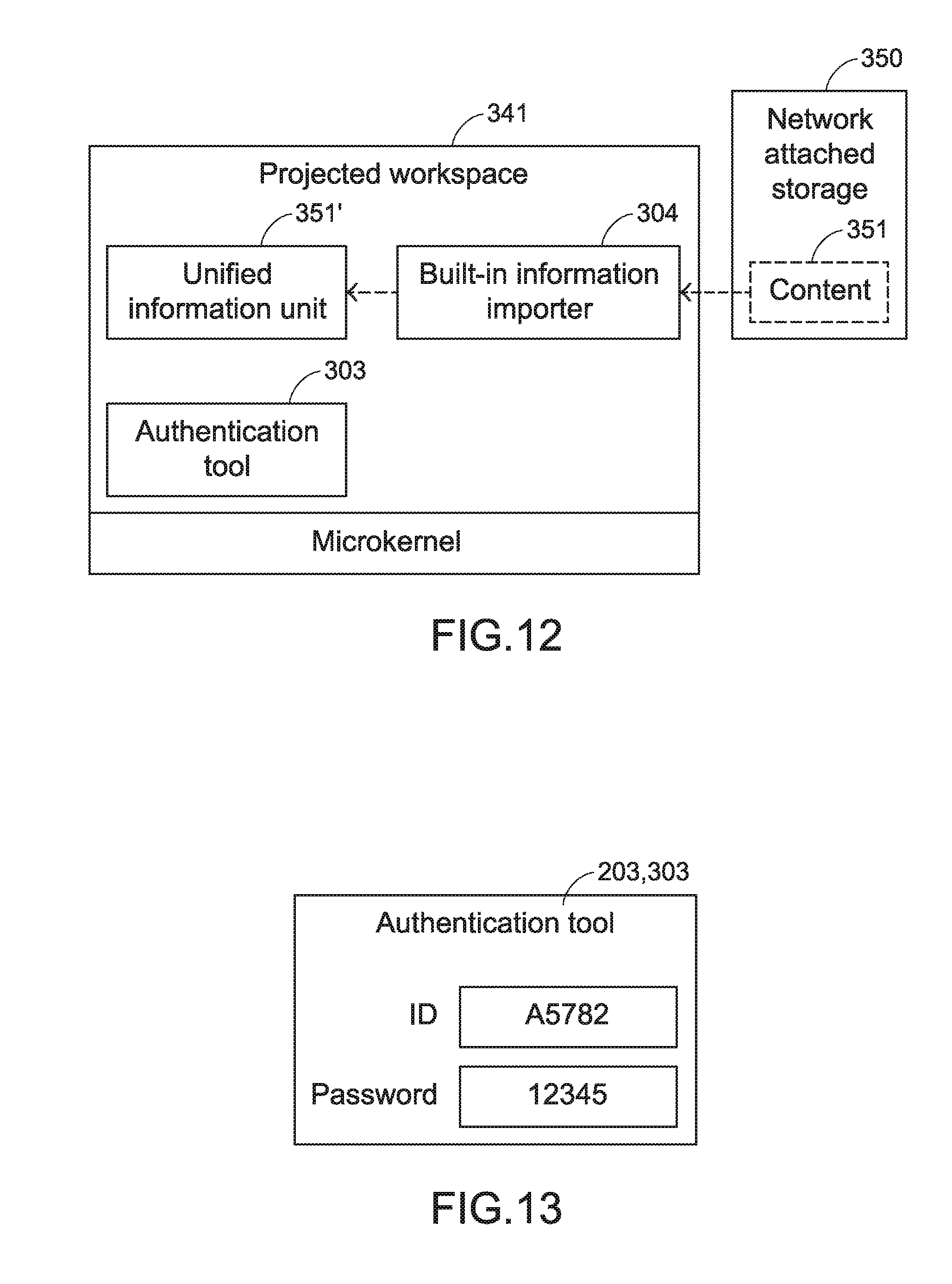
D00013
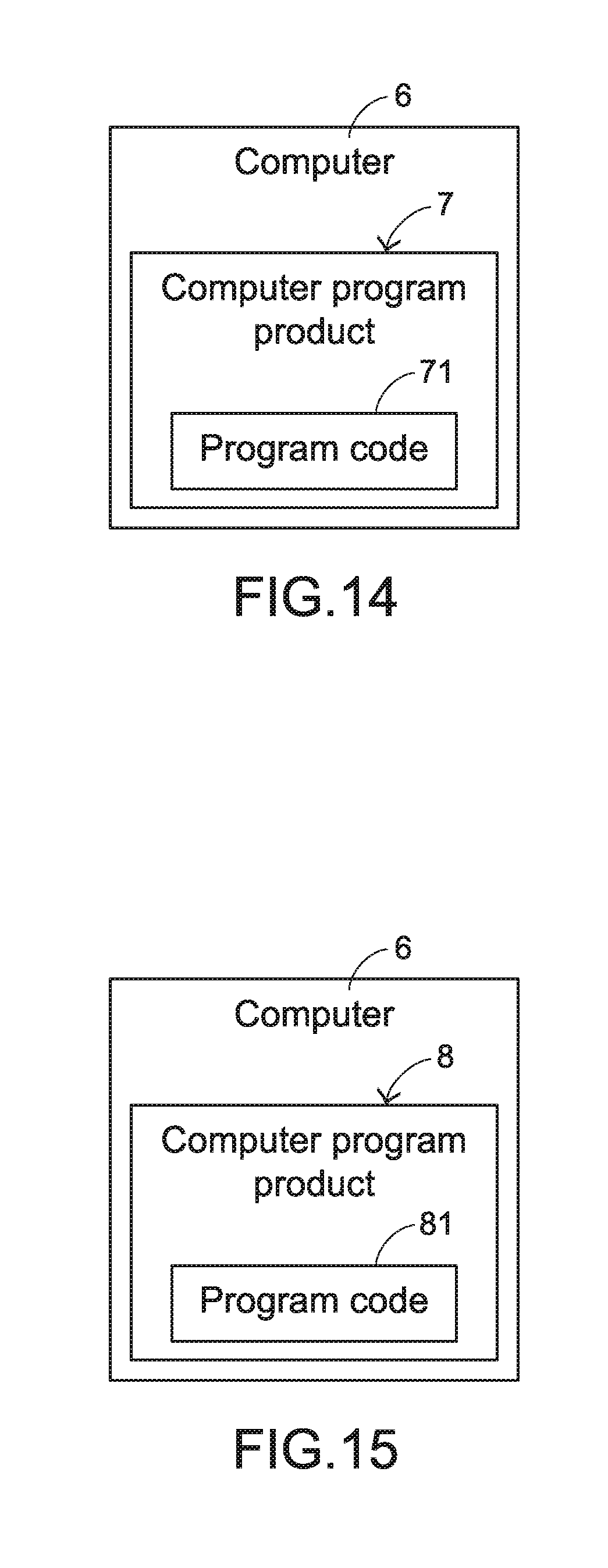
XML
uspto.report is an independent third-party trademark research tool that is not affiliated, endorsed, or sponsored by the United States Patent and Trademark Office (USPTO) or any other governmental organization. The information provided by uspto.report is based on publicly available data at the time of writing and is intended for informational purposes only.
While we strive to provide accurate and up-to-date information, we do not guarantee the accuracy, completeness, reliability, or suitability of the information displayed on this site. The use of this site is at your own risk. Any reliance you place on such information is therefore strictly at your own risk.
All official trademark data, including owner information, should be verified by visiting the official USPTO website at www.uspto.gov. This site is not intended to replace professional legal advice and should not be used as a substitute for consulting with a legal professional who is knowledgeable about trademark law.